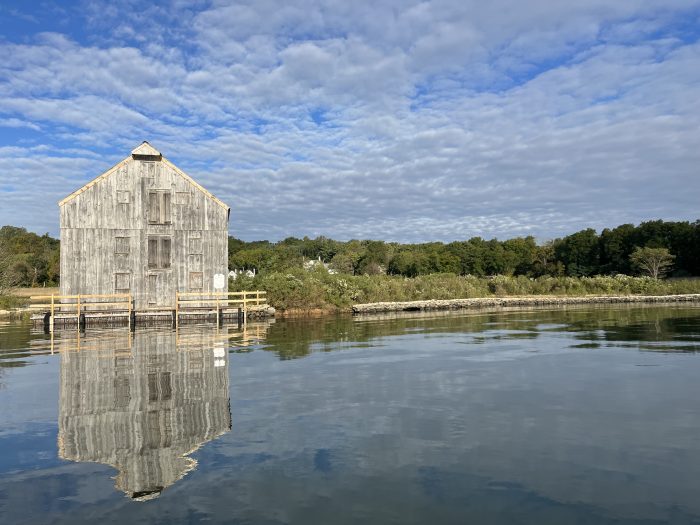Huntington gristmill receives new name
An old gristmill in Huntington has a new name.
The not-for-profit organization entrusted with the preservation of the mill and the adjoining bird sanctuary is now known as Lefferts Tide Mill & Preserve. Previously called Van Wyck-Lefferts Tide Mill Sanctuary, the shorter, simpler name still conveys the group’s dual mission of preserving the most complete 18th-century tide mill in the country and its mill pond, which has become a sanctuary for a wide variety of birds and other wildlife.
The Lefferts Tide Mill & Preserve is an 18th-century treasure. A state-of-the-art machine when it was built between 1794 and 1797, it ceased operating in the 1870s when more efficient steam-powered mills elsewhere supplanted its older technology. Harnessing the power of the tides, by the 1860s, the mill was producing 4,000 bushels of wheat, 500 bushels of corn and 300 bushels of feed, according to the 1860 U.S. census.
The Lefferts Tide Mill & Preserve board of directors partners with the Huntington Historical Society to provide tours of the mill, which is accessible to the public by boat. Proposed tour dates for this year are: June 10, June 21, July 8, July 19, Aug. 2, Aug. 19, Sept. 9, Sept. 16, Oct. 4 and Oct. 18.
Since taking ownership of the mill from The Nature Conservancy in 2019, Lefferts Tide Mill & Preserve has secured funding through foundation grants and public donations to undertake a $300,000 stabilization of the dam and structural repairs to the mill building, including re-supporting its 18th-century wooden gears and installing a new wood shingle roof. To see a 12-minute video of the repairs, go to: www.huntingtontidemill.org/millrenovation. Currently, contractors are working to install a new timber bulkhead to protect the mill’s stone foundation from waves and ice. An earlier timber bulkhead was constructed in 1983 and has reached the end of its lifespan.
The Lefferts Tide Mill & Preserve’s mission also includes maintaining the preserve as a sanctuary for native and migratory waterfowl and as an important contributor to the biodiversity of the surrounding area.
For more information, contact Claudia Fortunato-Napolitano at [email protected].







